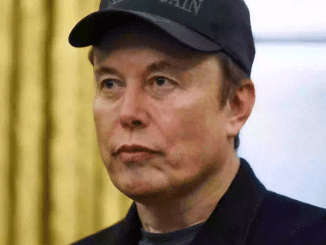
In a bold and unprecedented move, NASA has officially signed a contract with SpaceX for its ambitious Starship spacecraft, despite the fact that the vehicle has yet to complete a single successful test flight. The announcement sent shockwaves through the aerospace community and raised eyebrows across the globe how could the world’s most reputable space agency place such a massive bet on a rocket that keeps blowing up?
But for those familiar with Elon Musk’s relentless pace and disruptive success, this may not be so surprising. NASA’s decision, far from reckless, signals a radical shift in how space exploration is managed, funded, and risk-assessed in the 21st century.
What Is Starship, and Why Does It Matter?
SpaceX’s Starship is not just another rocket it’s a game-changing, fully reusable spacecraft designed to carry crew and cargo to the Moon, Mars, and beyond. The vehicle is meant to eventually replace both Falcon 9 and Falcon Heavy, delivering a much more powerful and cost-efficient platform for deep space missions.
With a towering 120 meters in height and capable of delivering up to 150 tons of payload to orbit, Starship is humanity’s most ambitious attempt to break free from Earth’s gravity on a large scale.
A Trail of Explosions, But a History of Progress
As of early 2025, Starship’s test history has been dramatic, to say the least—with multiple prototypes experiencing mid-air failures, explosive landings, and hardware issues during ascent. Yet, these setbacks haven’t slowed the program’s momentum. If anything, they’ve proven that iterative design “test, fail, learn, repeat” is at the core of SpaceX’s success.
Just a decade ago, critics scoffed at the Falcon 9’s prospects. Today, it’s NASA’s most flown and trusted commercial rocket. The same was once said of Crew Dragon, which now regularly ferries astronauts to the ISS.
“Starship is difficult,” Musk tweeted after a fiery test, “but we will make it work. Failure is just part of the path to success.”
NASA’s Lunar and Martian Ambitions Ride on This
Starship is not just a SpaceX dream it’s central to NASA’s Artemis program, which aims to return humans to the Moon and later push toward Mars. In fact, NASA selected Starship as the Human Landing System (HLS) for Artemis III, the mission slated to land the first woman and next man on the lunar surface.

Despite Starship’s testing woes, NASA doubled down on its commitment, formalizing the partnership with this latest contract. The agency appears confident that SpaceX’s pace of innovation and ability to deliver under pressure will once again pull through.
“We’ve seen what SpaceX can do,” said NASA Administrator Bill Nelson. “They’ve transformed access to space—and we believe they’ll do it again with Starship.”
The Financial and Strategic Calculus
By signing on with SpaceX, NASA isn’t just betting on technology it’s placing a calculated wager on affordability. Starship’s reusability promises to slash launch costs by orders of magnitude, opening the door to more ambitious missions, frequent travel to orbit, and broader international collaboration.
SpaceX is largely self-funding Starship’s development, reducing NASA’s financial risk while maintaining influence in shaping the vehicle for its own missions. It’s a win-win—if it works.
Critics Warn of Overconfidence
Not everyone is cheering.
Some space policy experts argue that NASA’s dependence on an unproven system is dangerous, especially when human lives are at stake. Others worry that SpaceX’s dominance could squeeze out other players and concentrate too much power in a single private company.
“The risk isn’t just technical,” warned one former NASA engineer. “It’s institutional. What if SpaceX stumbles? Who picks up the pieces?”
The New Space Age Philosophy: Risk, Iterate, Reward
What this moment truly represents is a paradigm shift. Gone are the days when space agencies waited decades to develop a rocket under rigid government programs. Today’s space race is rapid, competitive, and deeply entrepreneurial.
NASA’s contract with SpaceX is not just about rockets it’s about embracing a Silicon Valley mindset, where fast failures pave the way to faster innovation.
Final Thoughts: Will Starship Soar or Shatter Expectations?
As SpaceX continues refining Starship with increasingly ambitious tests some of which may still end in flames NASA’s faith could either be rewarded spectacularly or tested to the limits.
But one thing is certain: no one is pushing the boundaries of space like Elon Musk.
Whether Starship ultimately soars toward Mars or stumbles back to Earth, this contract marks a turning point in human spaceflight where bold vision, private innovation, and public trust collide at Mach speed.


